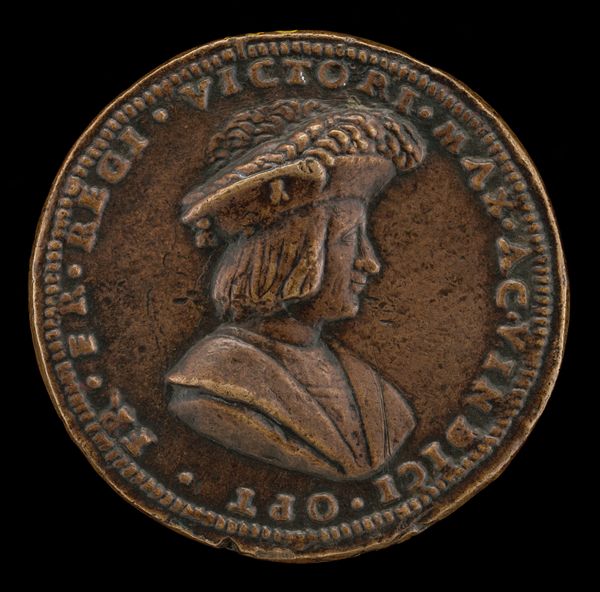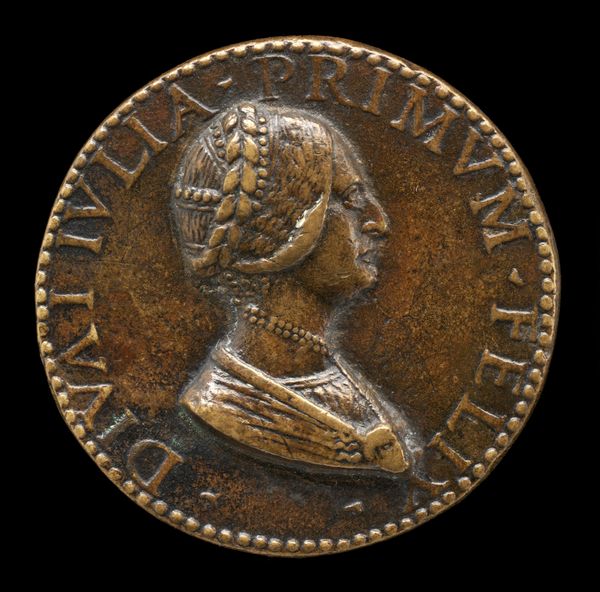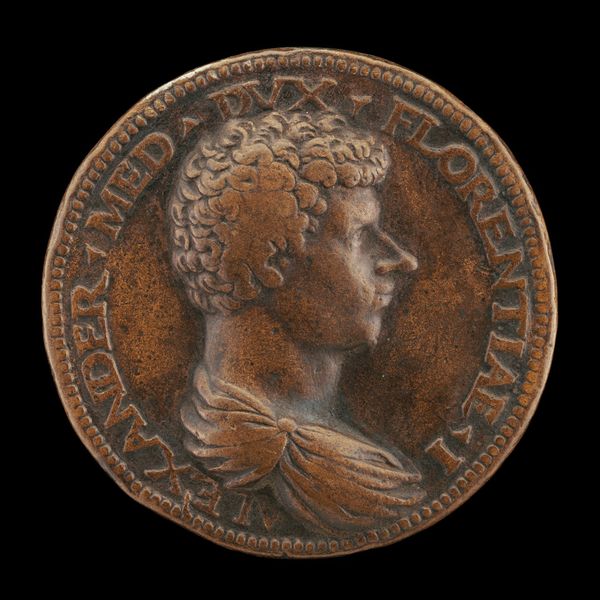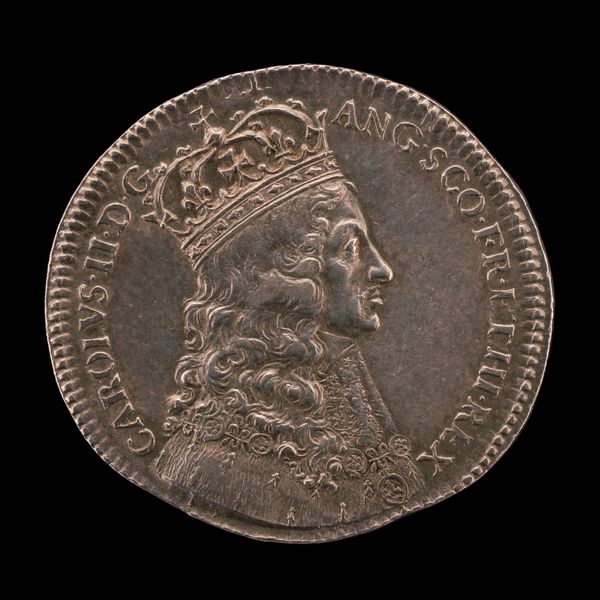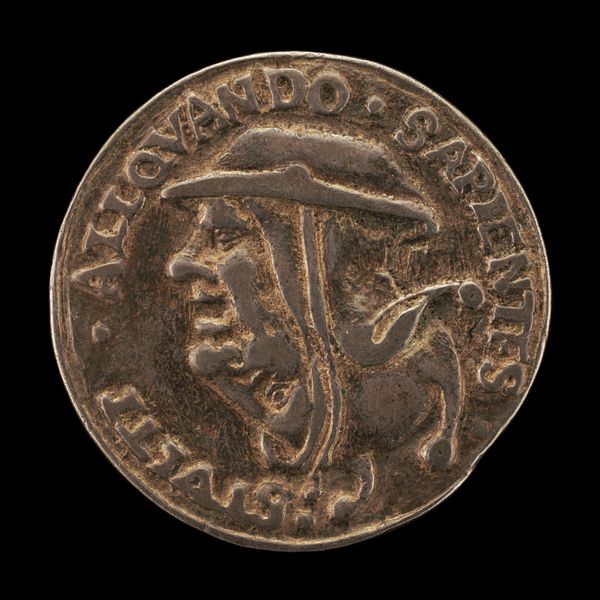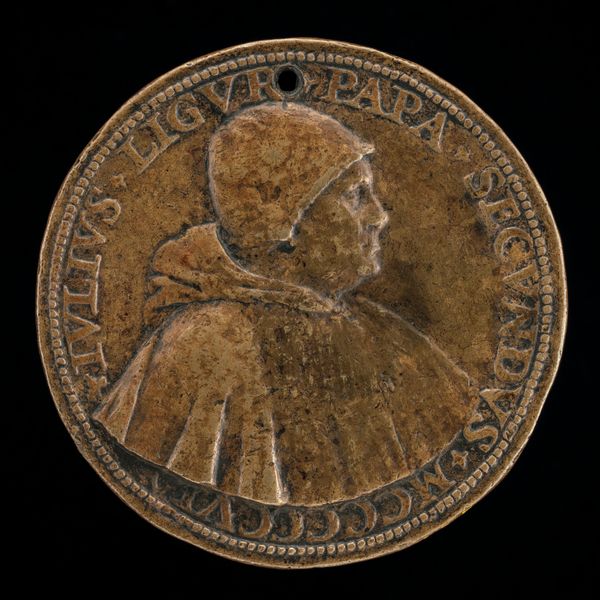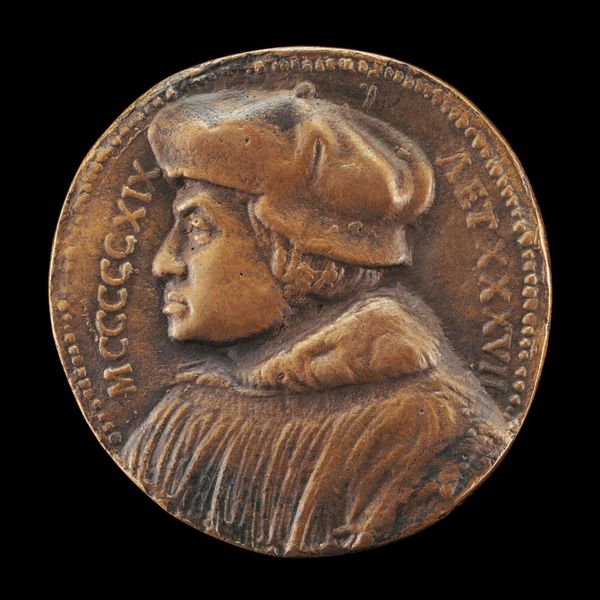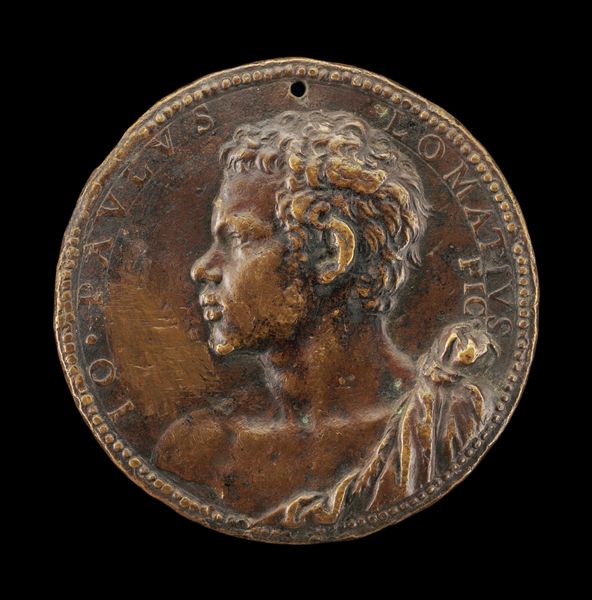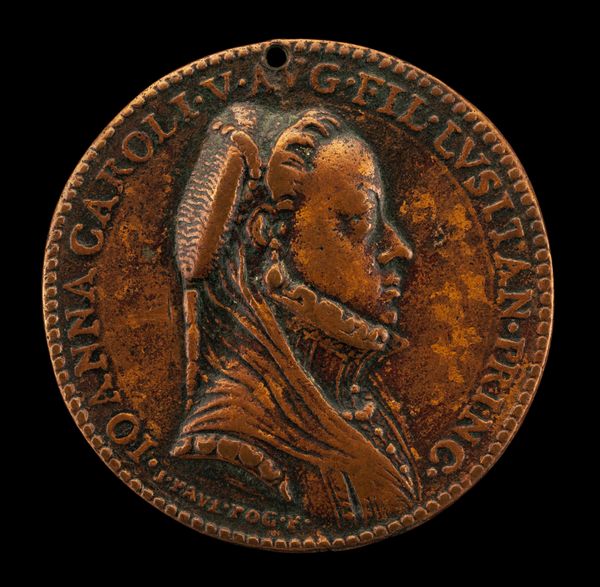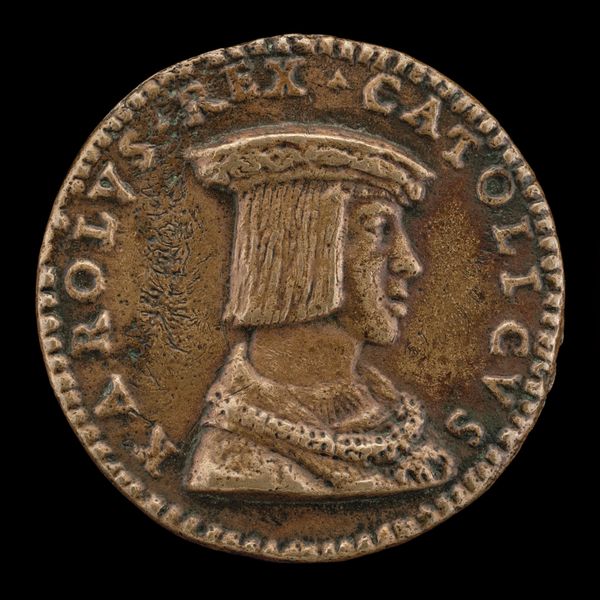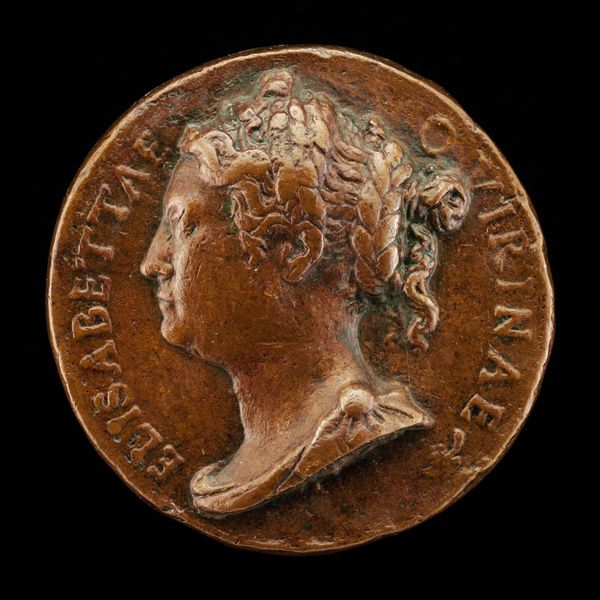![Anna Hofmann, died 1594, Second Wife of the Artist [obverse] by Jakob Hofmann](/_next/image?url=https%3A%2F%2Fd2w8kbdekdi1gv.cloudfront.net%2FeyJidWNrZXQiOiAiYXJ0ZXJhLWltYWdlcy1idWNrZXQiLCAia2V5IjogImFydHdvcmtzL2YwMDZhMDkxLTQ3ZmYtNGIwNy04OTdmLTdlYThhNTNlOGQ4Zi9mMDA2YTA5MS00N2ZmLTRiMDctODk3Zi03ZWE4YTUzZThkOGZfZnVsbC5qcGciLCAiZWRpdHMiOiB7InJlc2l6ZSI6IHsid2lkdGgiOiAxOTIwLCAiaGVpZ2h0IjogMTkyMCwgImZpdCI6ICJpbnNpZGUifX19&w=3840&q=75)
metal, bronze, sculpture
#
portrait
#
medal
#
metal
#
bronze
#
11_renaissance
#
sculpture
Dimensions: overall (diameter): 3.44 cm (1 3/8 in.) gross weight: 15.58 gr (0.034 lb.) axis: 12:00
Copyright: National Gallery of Art: CC0 1.0
Curator: Let's discuss this Renaissance bronze medal. It depicts Anna Hofmann, the second wife of the artist, Jakob Hofmann, and dates back to around 1594, the year of her death. Editor: My initial impression is one of somber elegance. The patina of the bronze lends an antique air. The details of her clothing and hair are remarkably preserved for what, from all evidence, appears to be a cast, rather than carved portrait. Curator: Absolutely. Hofmann's skillful manipulation of the medium is evident. Look at the crispness of the lettering and the delicate modeling of her face in profile. Consider the relief, and how that plays into perceptions of status here. Editor: True. But to me, what's more compelling is understanding the societal role it played. Who was involved in its manufacture? And given the cost and skill involved, for what market, and under what sort of patronage, was this item manufactured? These works weren't isolated events of high art. Curator: Precisely. And while we can never know precisely what Jakob Hofmann hoped to capture, these objects served a mnemonic purpose and acted as markers of dynastic consolidation. Medals like this offered the owner an avenue to declare familial status. Editor: It's hard to divorce that use, that role, from the fact that this particular piece seems intended as a memento mori. Her name itself has the epitaph "died 1594." Curator: Death lends it significance now, certainly, especially in how the metal itself speaks to enduring legacy, an implicit rebuke of mortality through art. But bronze allowed the efficient dissemination of important ideas about personage, rank, and virtue. Editor: You're quite right. As much as it elevates, though, it also serves a humble purpose. I’m still thinking about that manual labor involved in its creation. The medal is, at its core, both a document of skill and also of a collective labor and of human hands, now forever gone. Curator: Indeed. It is both an aesthetic and a social document. An intricate intersection of Renaissance skill, personal grief, and material production. Editor: Yes, each aspect enriching our understanding of this single piece and the world that birthed it.
Comments
No comments
Be the first to comment and join the conversation on the ultimate creative platform.
